DMAC BUILDINGS

Micro Foil
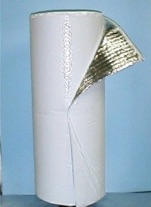
Reflects Heat
-
Micro Foil effectively reflects a heat source as opposed to absorbing it and dissipating it as fiber glass (mass based) insulations must do. Airspace must be present for proper results.
Manufactured from
-
1/4” polypropylene core material
-
Two layers of high purity polished aluminum film
Patented taping system
-
Double sided tape along one edge for quicker installation and for creating a vapor tight seal
Packaging
-
16”, 24”, 48” x 125’
-
72” x 75’
-
Custom sizes to fit larger installations
Physical Characteristics
-
Surface emissivity: .03 , Reflectivity: .97
-
Flame Spread Index ASTM 84: 0
-
Flame Development ASTM 84: 15
-
Self Extinguishing Material
-
UL tested, awaiting UL factory audit for final UL approval and listing
-
R-Value ASTM C236 Hot Box Test
-
✓14.4 Roof Downward
-
✓7.4 Roof Upward
-
✓10.2 Wall Horizontal
-
Fungus Resistance Mil E 8261A: None
-
Water Vapor Transmission grains/hr sqft, ASTM E96: .005
-
Water Absorption lbs/sqft, FTMS 101B Method 4035: .0003
-
Useable Temperature : -150 F to +280 F
Benefits
-
Fast and easy installation
-
No special tools needed, special work site or worker protection besides safety glasses
-
No hazardous chemicals
-
Green building standards
-
Practically eliminates rodent infestation
-
Condensation control
-
Self taping seams
-
Stops 97% of radiant energy–stop wasting energy
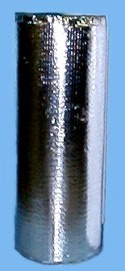
Uses
-
Under Radiant Heat floors –between floor joists (not under concrete –see Hydronics article and FTC notice)
-
Metal Buildings
-
Pole Barns
-
Commercial
-
Residential
-
Walls
-
Attics
-
Animal Barns
Q and A
Question: What is a radiant barrier?
Answer: A radiant barrier is a layer of aluminum foil placed in an airspace to block radiant heat transfer between a heat radiating surface (such as a hot roof) and a heat absorbing surface (such as conventional attic insulation at the ceiling level).
Question: Who says radiant barriers are effective?
Answer: Florida Solar Energy Center, Tennessee Valley Authority, and University of Mississippi al conducted tests to determine the effectiveness of radiant barriers. The test results revealed ceiling heat flow reductions to be as much as 45%.
Question: Will roof temperatures increase due to the installation of a radiant barrier?
Answer: Yes, but only slightly. The Florida Solar Energy Center has measured the temperatures of roof shingles above attic radiant barriers on hot, sunny summer days. Peak temperatures were only 2-5 degrees higher than the temperature of shingles under the same conditions without a radiant barrier.
What the experts say about Radiant Barriers . . . . . . . .
A radiant barrier can greatly improve your comfort level, especially in second-floor bedrooms. During mildly hot weather, attic radiant barriers can reduce the heat enough that you may not need to operate your air conditioner at all.
James T. Dulley Author, "Cut Your Utility Bills"
A radiant barrier cuts air conditioning costs by blocking a sizable portion of the downward heat gain into the building...you can stay comfortable without air conditioning during mild weather...radiant barriers can expand the use of space in your home in garages, porches, and workrooms...attics are more usable for storage...a cooler attic transfers less heat into air conditioner ducts, so the cooling system operates more efficiently.
Ingrid Melody, Florida Solar Energy Center
Adding a radiant barrier to R-19 insulation proved more effective than upgrading to R-30. When heat gains to the cold air traveling inside A/C ducts (which are usually installed in attic spaces) were considered, all insulation/radiant barrier combinations showed faster payback periods than insulation upgrades.
Texas A & M, "Evaluation of Insulation/Radiant Barrier Systems"
Micro Vent
MicroVent is perforated to allow breathability under surfaces like vinyl siding for condensation control with a 97% Radiant Barrier Reflectivity. This gives many advantages for uses where a non-perforated material could cause breathability issues.
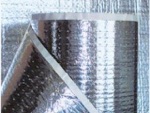
-
tent walls
-
cabin walls
-
plane cabins
-
autos
-
refrigerated tractor trailers
-
other interior wall spaces where condensation may accumulate when airborne moisture and temperature differences approach dew point.

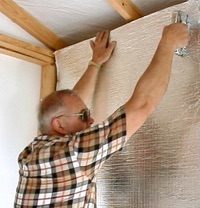
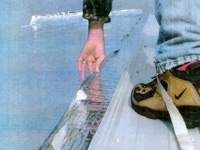
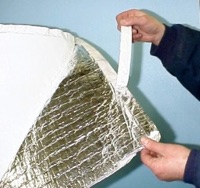

1216 Tamara Drive, Saint Joseph, MO 64506
Toll Free: (877) 704-7283 ∙ Local: (816) 396-6256 ∙ E-mail: info@dmacbuildings.com